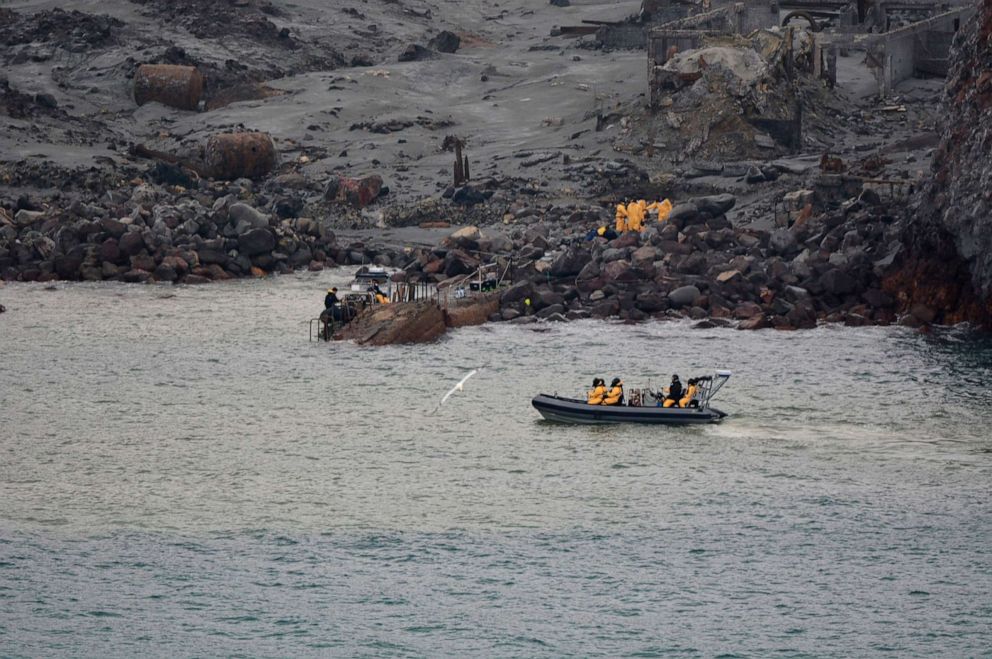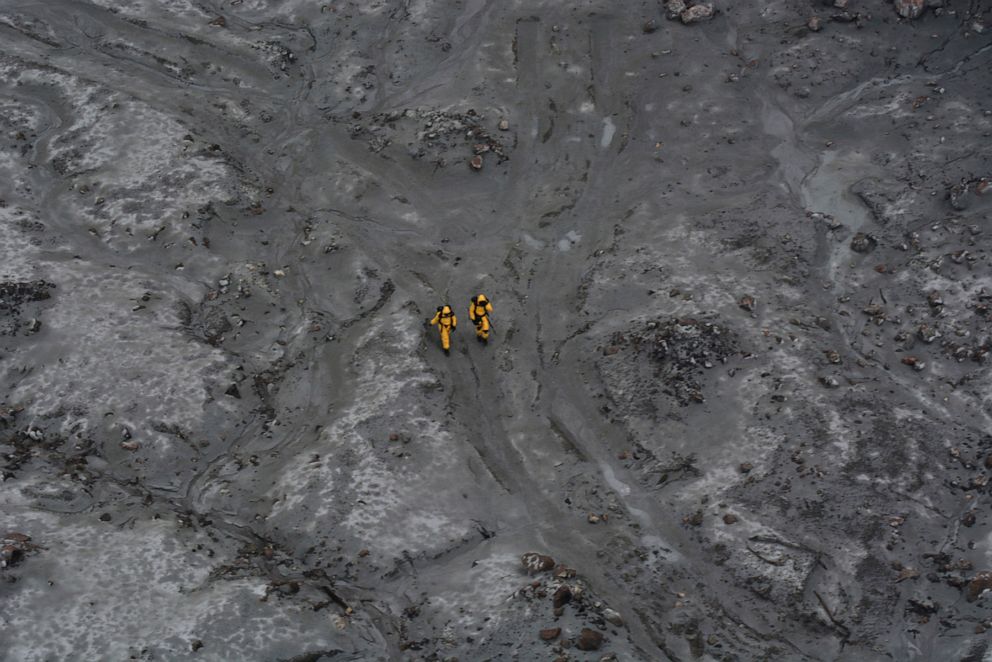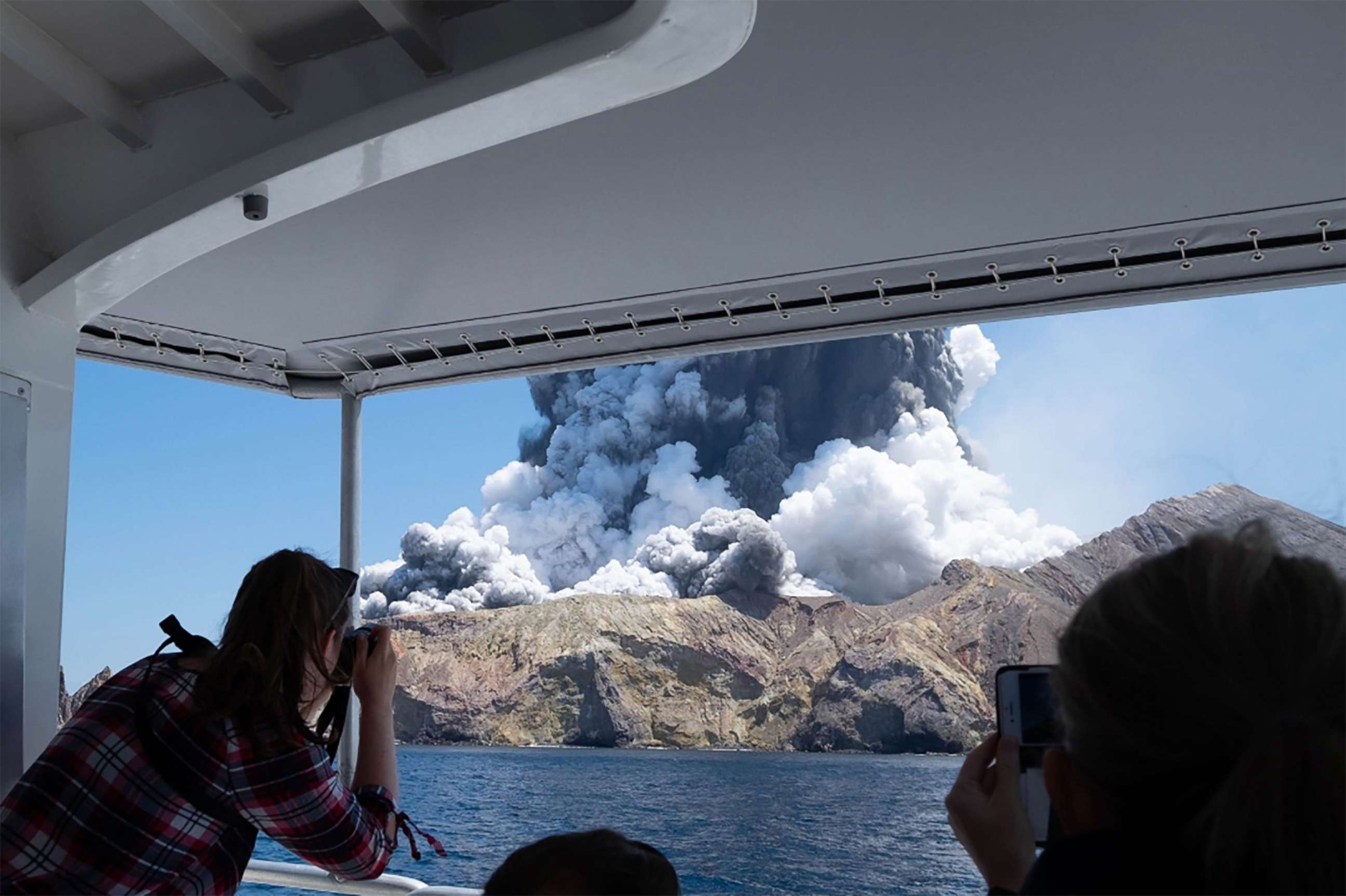New Zealand volcano death toll climbs to 16 as divers search for more bodies
Two other victims are feared dead, police said.
LONDON -- Another person has died from their injuries in the deadly volcanic eruption on New Zealand's White Island, bringing the confirmed fatalities to 16, authorities announced.
The bodies of two people are still unaccounted for and divers have been deployed into the waters surrounding the island to search for them.
Authorities have so far retrieved the bodies of six tourists from the volcanic island during a major operation that began at first light on Friday.
"Unfortunately, the recovery option is not over as two people remain unaccounted for. We know at least one body is in the water," New Zealand Police Commissioner Mike Bush said in a statement Friday, noting that divers "are currently attempting to recover this body."
"We are making every effort to locate and recover the two remaining deceased," he added. "The environment the recovery team faced today was highly unpredictable and challenging. They showed absolute courage and commitment to ensure we can offer some closure to the families and friends of those who have lost loved ones."

New Zealand's national police force identified the victims still missing as 17-year-old Winona Langford from Australia and 40-year-old Hayden Marshall-Inman from New Zealand. The identities of 15 of the 16 known fatalities have also been released.
Meanwhile, police confirmed the death of an American woman, Barbara Hollander, early Tuesday morning. Her husband, Martin Hollander, and her two children, Matthew and Berend, were previously identified among the dead.
White Island, also known as Whakaari, is about 30 miles from mainland New Zealand and is home to the country's most-active cone volcano. The uninhabited island has had regular eruptions for years but has become a widely popular tourist destination, accessible only by boat and helicopter.
A total of 47 people, including at least nine Americans, were visiting the volcanic island when it suddenly spewed scalding steam, ash and rock into the air on the afternoon of Dec. 9. Most people were evacuated via helicopters that day and taken to hospitals for injuries, while several remained stranded on the island, according to the New Zealand Police, which had said there were likely no survivors.

Rescue workers were unable to return to White Island for three days because of dangerous and unpredictable conditions. A 5-mile no-fly zone is in place around the island, along with a five-nautical-mile maritime exclusion zone.
Risk assessment maps released last Thursday by New Zealand's geoscience agency, GNS Science, show the crater floor of White Island remains a high-risk area. GNS science volcanologist Graham Leonard said the chance of another eruption "is increasing every day."
At least 10 people have died from their injuries since being rescued, police said. The latest death was an Australian national who died after being transferred to a hospital in their home country. The others died in hospitals in New Zealand, according to police.

Meanwhile, dozens of people suffering burns from the volcanic eruption remain hospitalized and medical staff are working around the clock to care for them. Many of the victims sustained severe burns covering over 90% of their bodies, and New Zealand doctors will need an estimated 1.2 million square centimeters of skin grafts to continue treating the patients, according to Dr. Peter Watson, chief medical officer of the Counties Manukau District Health Board.
New Zealand police have launched an investigation into the circumstances of the injuries and deaths on White Island.
Those who cannot get in touch with a friend or family member in the wake of the eruptions are urged to register them by visiting the New Zealand Red Cross website, or they can contact the New Zealand Police.
ABC News' Karma Allen, Alexandra Faul, Marcus Moore, Kirit Radia, Christine Theodorou, Jim Vojtech, Anna Thomas, Ella Torres, Alondra Valle and Karson Yiu contributed to this report.




